So no Aberystwyth-Carmarthen line ITTL?
I thought it closed same as OTL. That all being said, Wales should get a good north/south route here one way or the other.
So no Aberystwyth-Carmarthen line ITTL?
So no Aberystwyth-Carmarthen line ITTL?
I thought it closed same as OTL. That all being said, Wales should get a good north/south route here one way or the other.
Understood thank you for your response.It's possible, but tbh I can't see it being financially sustainable. There's too many rural lines in that area for the population; some are going to have to be abandoned, and that's highly likely to be the Chester Northgate network.
Nice update there @Devvy
No rail link to Swansea Airport?
Nice that Mumbles got its service back.
Remind me please- is Intercity not the same as Pullman services ITTL?
Will scotrail be devolved to Holyrood as in OTL ? Also in your last update you mentioned transport for wales are they a similar entity to OTL or do regional remain wales main rail operator?1997 - The Labour Manifesto for Government [excerpts] (*1)
Railways
The process of rail privatisation was refused by the British Parliament, but the Conservatives have pursued stealth privatisation nonetheless. It has made fortunes for a few, but has been a poor deal for the taxpayer, and has fragmented the network. Their economic recklessness with British Rail has limited investment and resulted in areas of our network becoming rundown, unreliable and unsafe. Our task will be to improve the situation as we find it, not as we wish it to be. Our overriding goal must be to win more passengers and freight on to rail. The system must be run in the public interest with higher levels of investment and be a truly "British Rail" which serves all of Britain - not just a few cities (*2). There must be convenient connections, through-ticketing and accurate travel information for the benefit of all passengers.
To achieve these aims, we will establish an effective and accountable financial programme for British Rail, ensuring that the public subsidy serves the public interest. We will reform British Rail to devolve more, and truly serve local communities across the country, whilst establishing national standards and programmes nationwide to provide a clear, coherent and strategic programme for the development of the railways so that passenger expectations are met.
The Conservative plan for the wholesale privatisation of London Underground is not the answer, much as it was not the answer for British Rail. It would be a poor deal for the taxpayer and passenger alike. Yet again, public assets would be sold off at an under-valued rate. Much-needed investment would be delayed. The core public responsibilities of the Underground would be threatened.
Road transport
We remain unpersuaded by the case for heavier, 44-tonne lorries mooted by the Conservatives. Our concern is that they would prove dangerous and damaging to the environment, and the case for them is weakened if British Rail can be reformed to offer better freight solutions.
Life in our countryside
Labour recognises the special needs of people who live and work in rural areas. The Conservatives do not. Public services and transport services in rural areas must not be allowed to deteriorate (*3). The Conservatives have tried to privatise the Post Office. We opposed that, in favour of a public Post Office providing a comprehensive service. Conservative plans would mean higher charges for letters and put rural post offices under threat.
We favour a moratorium on large-scale sales of Forestry Commission land. We recognise that the countryside is a great natural asset, a part of our heritage which calls for careful stewardship. This must be balanced, however, with the needs of people who live and work in rural areas.
Our initiatives to link all schools to the information superhighway will ensure that children in rural areas have access to the best educational resources. (*4)
Sport
A Labour government will take the lead in extending opportunities for participation in sports; and in identifying sporting excellence and supporting it. We will bring the government's policy of forcing schools to sell off playing fields to an end. We will provide full backing to the bid to host the 2006 football World Cup in England (*5). A Labour government will also work to bring the Olympics and other major international sporting events to Britain.
Devolution: strengthening the Union (*6)
The United Kingdom is a partnership enriched by distinct national identities and traditions. Scotland has its own systems of education, law and local government. Wales has its language and cultural traditions. We will meet the demand for decentralisation of power to Scotland and Wales, once established in referendums.
As soon as possible after the election, we will enact legislation to allow the people of Scotland and Wales to vote in separate referendums on our proposals, which will be set out in white papers. These referendums will take place not later than the autumn of 1997. A simple majority of those voting in each referendum will be the majority required. Popular endorsement will strengthen the legitimacy of our proposals and speed their passage through Parliament.
For Scotland we propose the creation of a parliament with law-making powers, firmly based on the agreement reached in the Scottish Constitutional Convention, including defined and limited financial powers to vary revenue and elected by a proportional electoral system. In the Scottish referendum we will seek separate endorsement of the proposal to create a parliament, and of the proposal to give it defined and limited financial powers to vary revenue. The Scottish parliament will extend democratic control over the responsibilities currently exercised administratively by the Scottish Office. The responsibilities of the UK Parliament will remain unchanged over UK policy, for example economic, defence and foreign policy.
The Welsh assembly will provide democratic control of the existing Welsh Office functions. It will have secondary legislative powers and will be specifically empowered to reform and democratise the quango state. It will be elected by an proportional electoral system.
Following majorities in the referendums, we will introduce in the first year of the Parliament legislation on the substantive devolution proposals outlined in our white papers.
Good local government
London (*7)
London is the only Western capital without an elected city government. Following a referendum to confirm popular demand, there will be a new deal for London, with a strategic authority and a mayor. Both will speak up for the needs of the city and plan its future. They will not duplicate the work of the boroughs, but take responsibility for London-wide issues - economic regeneration, planning, policing, transport and environmental protection. London-wide responsibility for its own government is urgently required. We will make it happen.
The regions of England (*8)
The Conservatives have created a tier of regional government in England through quangos and government regional offices. Meanwhile local authorities have come together to create a more co-ordinated regional voice. Labour will build on these developments through the establishment of regional chambers to co-ordinate transport, planning, economic development, bids for European funding and land use planning.
Demand for directly elected regional government so varies across England that it would be wrong to impose a uniform system. In time we will introduce legislation to allow the people, region by region, to decide in a referendum whether they want directly elected regional government. Only where clear popular consent is established will arrangements be made for elected regional assemblies. This would require a predominantly unitary system of local government, as presently exists in Scotland and Wales, and confirmation by independent auditors that no additional public expenditure overall would be involved. Our plans will not mean adding a new tier of government to the existing English system.
----------------------------
Much as I usually try to stay out of politics, this is directly relevant after 18 years of Conservative rule, which, like OTL, has been "gently" pro-car. Although we should note that even in OTL, Thatcher authorised the East Coast Main Line electrification and accompanying trains, as well as the Channel Tunnel and early days of Eurostar.
(*1) This is basically the OTL manifesto, but suitably "refined" for taking place in this TL.
(*2) No prizes for guessing what this refers to....
(*3) Inferring no cuts to rural rail services.
(*4) Meaning more railway lines; particularly closed railway lines still owned by British Rail to be used to lay new telecommunications cables.
(*5) I think we all know how that turned out. It's destiny in any TL that England must never host a World Cup (football) after 1966.....
(*6) So Welsh and Scottish devolution is coming in.
(*7) And hello to the London Assembly.
(*8) And lastly hopefully some form of regional devolution within England, as previously hinted in chapters past. I still think this will only pass in certain areas, and effectively replace the county council level with a regional authority level, retaining the two levels of local government in England, but with more powers at the regional level.
Will scotrail be devolved to Holyrood as in OTL ? Also in your last update you mentioned transport for wales are they a similar entity to OTL or do regional remain wales main rail operator?
Interesting manifesto ideas there. Nothing about Northern Ireland government though?
I wonder if the new GLC would operate London inside the M25 like its own County regardless of the old boundaries?
Perhaps this manifesto would help prevent the SNP rising over Labour in Scotland?
I suspect this is the manifesto favoured with BR management.
I as interesting in see what ITTL 2019 would be motive power used on british rails. What would be the types of EMUs used on another metro routes as well mainline EMUs and High Speed Trains as the Pullman Service. Would be the OTL Hitachi Super Express being built or the Stadler and CAF trains as Class 68.
By them way. Very nice timeline. Up until time would you be make them? 2020?
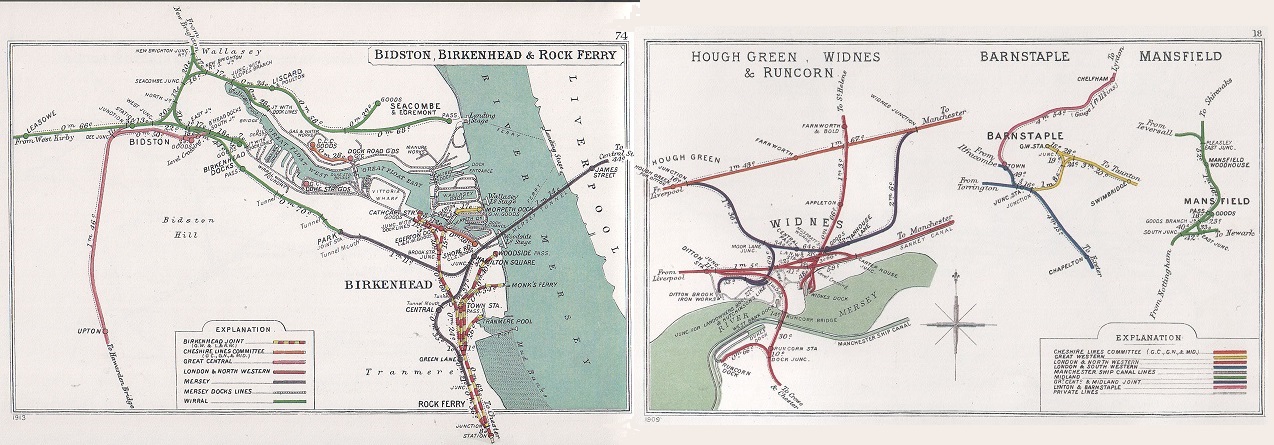
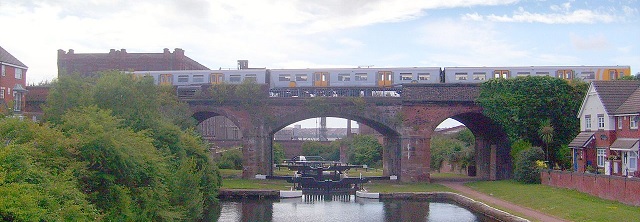
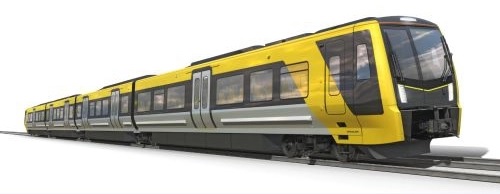

Nice update @Devvy
What stations are the Ireland Ferry ports covered by please?
Is there road-rail services to Ireland?
Opening up some of the North Wales routes should help boost investment and stuff.
The purchasing negotiations must have been fun. British Rail trying to somehow get paid for the 'assets' when all conventional accounting says they should be paying the Merseyside authorities for taking such a loss making mess off their hands.
Seems sad that all of the changes in this timeline can't stop politicians from putting in train orders with foreign firms. Its like they've learned nothing at all.
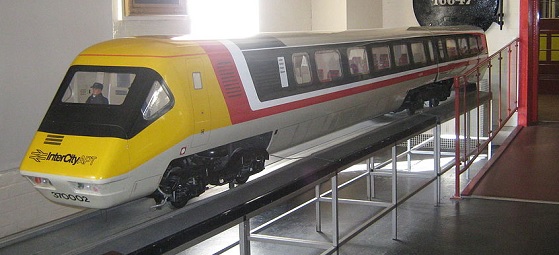
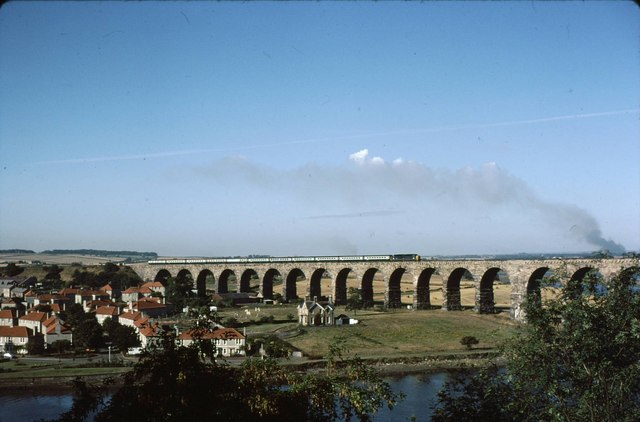
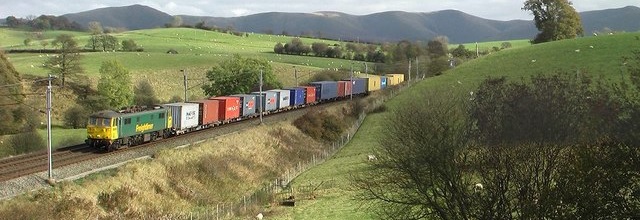
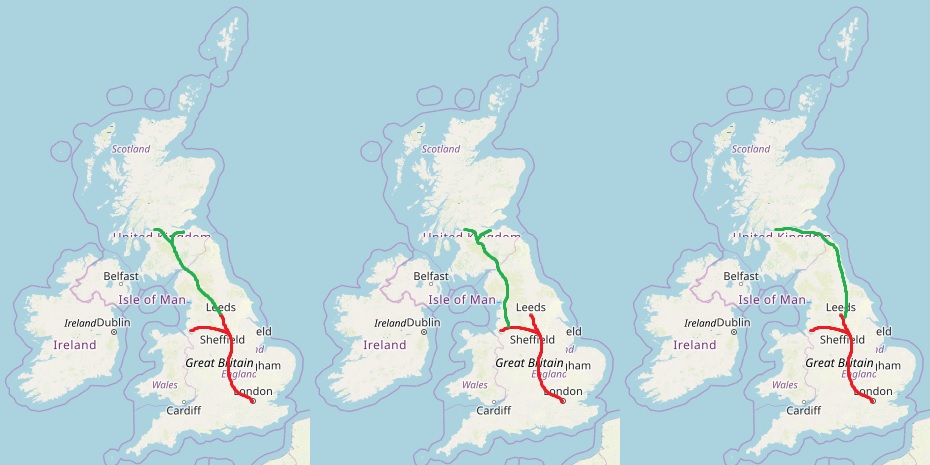

London Boudicca returns ! My favourite concept from your previous timeline.1997 - Pullman: Northern Strategy, Summary of Options.

The Pullman trains had come a long way since their early concepts.
Given the 1997 election of Labour, strong majority it had in Parliament, and commitment to making sure "British Rail serves Britain" (*1), it seemed obvious that there would be conversations shortly about the extension of Pullman services further north then Leeds. The commercial successes of the TGV in France were obvious, as was the less-successful financially Eurostar (*2) operation from London to Paris and Brussels.
Since Intercity Pullman operations had begun, huge number of passengers had switched to using the services. Manchester, Liverpool and Leeds had been the initial targets; Manchester and Leeds have gained significant economic benefits from it, although Liverpool with it's position right at the end of the line, had less significant time savings offered. Nottingham had, unforeseen, seen a rise in residency for London commuters (*3), being just under an hour from central London, aided by cheaper property prices. Sheffield, and the other smaller Yorkshire towns directly served, saw less impact for various reasons, but still saw economic advantages over those not directly served, of which Birmingham was the prime example (although served by high speed commuter trains indirectly). With the economy continuing to improve since the early 1990s, not least with the rapid growth of low cost airlines, but generally that demand for travel between the UK's largest cities would be expected to continue to increase significantly.
Since Pullman operations arrived in Yorkshire, there have been several studies in to the benefits (or lack of as some studies backed by third parties advocated) of extending the route north. Thus far, all proposals have not been implemented, for a variety of reasons, although many involve government financing and government policy (*4). The fast, comfortable and punctual trains have interested local layers of government further north repeatedly, and especially influential Scottish politicians (*5) have lamented that Pullman does not serve Scotland, to "detriment of the Union". Within internal benefits, operation further north of Pullman services would take over West Coast and East Coast route expresses to some combination of Newcastle, Glasgow and Edinburgh, allowing the release of existing rolling stock to be either cascaded down to other routes, or scrapped. The Class 55 locomotives, operating from London to Newcastle and Edinburgh are now approaching almost 40 years of operation; their long lasting service is a testament to both their build and design quality, but also careful maintenance by British Rail. They can not, however, operate forever, and new locomotives at the very least will soon be required (*6).

A Class 55 hauled express runs over the viaduct at Berwick.
Rail capacity is, at almost all sections of the route, limited to roughly 12 trains per hour. This is currently divided between Intercity (who use 4 paths for Pullman, and 3 for Intercity operations to Birmingham), and Network South East (who use 3 paths for London outer-commuter services from Northampton). Full trains, particularly from the North-West route, have led to calls for additional services from Liverpool, Manchester and Sheffield to London. This, and the additional demand for services from London to "further-north" will lead to congestion on the route, and risks compromising the very factors which have made Pullman a success - speed, punctuality and reliability. It seems implicit therefore, that any extension north will have to be conducted hand in hand with a resignalling of the route to add extra capacity. Examples from France indicate that up to 15 high speed trains per hour should be technically possible by improving the existing British Rail Balise Based Signalling, and reducing the signal block lengths from 1km to 0.5km.
Any increases in capacity and train service in to London, must equally be matched by investment in Pullman services in London. Currently, the Pullman route terminates at 4 platforms within Euston station (*7), as well as using former West Coast Route "fast" tracks south of Tring to access Euston. This places an undue weight on the WCML; it has to only operate with 2 tracks as far north as Tring, and with reduced station capacity at Euston, which was the driving force behind Network South East switching Northampton & Milton Keynes commuter services to run via the Pullman route (*8).

Railfreight by Freightliner on the West Coast Main Line.
Supplemental to the limted rail capacity on the Pullman Route, any extension north would release capacity on the legacy British Rail routes. Growing demand for railfreight, particularly in the conveyance of intermodal containers (*9), is pressing on capacity, especially on the West Coast Main Line which is electrified and therefore cheaper for the transport of freight. The removal of Anglo-Scottish (WCML services to Glasgow) would therefore release track capacity for improved short distance passenger operations and railfreight, especially as express services require more headway due to their speeds.
Working on the economic benefits laid out in prior studies, there is a clear business care for 2 tightly linked projects; extending the Pullman route north, and re-engineering the Pullman route in to London.
Pullman to the North

The three main options for extending Pullman north.
Option A (*10) ) Add extra Pullman services to Leeds, to access Leeds from the east, and then continue north-westerly to serve Carlisle, Edinbugh and Glasgow. This is the fastest Anglo-Scottish route on paper; it is almost a straight line to the Central Belt, but this belies the complexity of terrain. Significant challenges would be found for a new link, let alone environmental challenges through the Yorkshire Dales, or utilising the existing Settle-Carlisle Line would reduce operating speeds. It also means Newcastle, and the wider north-east, are not served.
Option B (*11) ) Add extra Pullman services to Manchester, which then continue north to Preston, Carlisle, Glasgow and Edinburgh. This would allow Manchester to benefit from additional Pullman services, and would take over much of the existing West Coast Main Line north of Preston, with some bypasses in place, particularly around Lancaster, and a large amount of track quadrupling to allow legacy services to continue operating. This option is cheapest, due to the considerable amount of existing infrastructure used, and also does not serve Newcastle or the north-east.
Option C (*12) ) Add a new set of Pullman services, operating to south of Leeds, whereby branch off and head north, utilising parts of the East Coast Main Line where appropriate. This would allow Pullman trains to serve Newcastle, Edinburgh and Glasgow simultaneously, but would require extensive works at each of the cities to allow Pullman segregation.
Pullman across London

Three sample options for extending Pullman across London.
There are several different options for how to extend Pullman services across London, but all rely on a different set of key considerations, and all allow Pullman services from the north to operate across London and on to Europe (customs, security & immigration concerns notwithstanding). It would also allow Eurostar services to operate north of London, subject to the same concerns.
Point A (*13) ) Central London station ("London Grand Central" as some have termed it); should it be at Euston or St Pancras. Building at Euston station would involve considerable disruption at an operation station, and with the associated cost increases. Building at St Pancras station itself would require an extensive overhaul of an old station. However, adjacent to St Pancras station lies the older goods yards, still in British Rail possession. Using this site would allow the reuse of central London property, links in to the existing London Kings Cross & St Pancras British Rail and London Underground connections, and without impact on existing rail operations.
Point B (*14) ) East London access (as suggested by Arup) or South London access (as historically favoured by British Rail). The existing route in to London from Europe, via Bromley, would continue operations for new high speed commuter services from Kent, but Pullman/Eurostar operations would branch off further south. The extended viaducts of the South Bank mean it would be expensive to rise from a tunnel and join the existing line closer to the centre, and Beckenham would be the closest to London tunnel exit point. East London access would involved the route running under eastern London, with a new station at Stratford, before diving under the Thames and rejoining the existing Eurostar route near Gravesend.
Point C (*15) ) London access from the north. Currently, all Pullman services use the previously West Coast Route "fast" tracks to access Euston station, with the corresponding reduction of capacity on the WCML legacy network. One suggestion has been to use the redundant tracks which previously accessed London Marylebone station on the now Beck Line Corridor to run from West Hampstead to Wembley, before diving in to a tunnel again as far as Tring.
Point D (*16) ) Cross London commuter services. High speed commuter services from Birmingham and Northampton have already started operating in to Euston station. A closely linked question would be whether to extend such commuter services "cross-city" as well, improving access for all to the Pullman central station, whilst also allowing new high speed journeys to be possible and the corresponding higher utilisation of rolling stock and reduction int he amount required to run a service.
-------------------------------
(*1) As mentioned in the Labour Manifesto chapter
(*2) Eurostar lower passengers then expected, but basically running 2 trains per hour to Paris and Brussels of standard length (200m) stock. OTL, Channel Tunnel safety rules means a train has to be 400m long; here the earlier state-funded construction of it has led to a different safety rules.
(*3) The less then 1 hour travel time to central London via Pullman, with a service every 15 minutes, I think would lead to Nottingham attracting a reasonable amount of London commuters given it's location, "it's not the north!" location (!), and ease of commuting.
(*4) Sounds familiar in any TL involving Government.
(*5) SNP in pre-devolution days.
(*6) The Class 55 locomotives are obviously old but have worked well for ECML Anglo-Scottish expresses. There will need to be a rolling stock refresh on the ECML (and WCML soon) whatever happens, so might as well make it Pullman!
(*7) Pullman using the 4 western platforms; 2 for Pullman services (1 each for Liverpool and Leeds services, meaning a service must leave within approx 20-25 minutes after arriving to avoid blocking the station), and 2 for NSE/Intercity high speed commuter services (train must leave within 10-15 minutes of arriving, which is "challenging" and requires careful and well choreographed management).
(*8) Longer distance services which stop infrequently obviously don't mix well with slower stopping services.
(*9) We've mentioned this before briefly, and there is another freight chapter coming up; but in brief, intermodal container freight transport is on the rapid rise due to globalisation, similar to OTL. Particularly on the WCML, as it's electrified, and thereby cheaper to operate freight trains on.
And more likely detail for those interested:
(*10) Pullman via Leeds to Scotland. This would see a line through the Yorkshire Dales; I really can't see a new line being authorised through here for environmental reasons, and electrification of the line not being particularly welcome either. The Ribblehead Viaduct would also need substantial work to bring it up to spec. The Settle-Carlisle Line would likely have a max speed of approx 80-90mph if modernised, with standard trains.
(*11) Pullman via Manchester to Scotland. Obviously adds extra services for Manchester and Sheffield but rather indirect. Would probably be able to take over portions of the WCML to reduce cost, but it's still going to be wiggly to avoid the national parks and the general unfavourable terrain. Also "less than direct", which will affect London to Scotland travel times. Some WCML traffic probably offloaded to Settle-Carlisle line as bypass route.
(*12) Pullman via Newcastle to Scotland. Added advantage of serving Newcastle, and allowing a single service to serve both Edinburgh and Glasgow in one, although travel times to Glasgow are not 100% perfect. Probable reuse of much of the ECML between Newcastle and Edinburgh, and north of York where it is dead straight. Some ECML traffic rerouted via Leeds-Harrogate-Northallerton as bypass route. All non-Pullman Anglo-Scottish traffic routed via Carlisle - potential single point of failure!
(*13) So here, I've assumed British Rail have kept the St Pancras yard (which OTL was turned in to the British Library in the 1990s) partly for this reason. British Library now sited in railway lands to north of Kings Cross/St Pancras. The area would require a small amount of house demolition (!) to the west of St Pancras approach tracks, but appears to mesh reasonably well. Euston would be difficult for mentioned reasons.
(*14) The historical HS1 debate in OTL. Both plans have merit, although east London authorities were more favourable to the HS1 scheme then south London authorities.
(*15) Some scope for reducing the amount of WCML takeover. In future, this could become a fully tunnelled route between central London and Britannia Airport, but at the moment I think this will just involve the reuse of some land to reduce WCML congestion rather then bypass the WCML entirely.
(*16) Clear scope for cross London high speed commuter services, and the removal of a significant amount of Kent commuter traffic from the legacy network, as well as speeding up via high speed route, a la OTL HS1.
London Boudicca returns ! My favourite concept from your previous timeline.
Going to be interesting to see Pullman get to Scotland soon...just trying to think which route though...
To spoil things, I think the route via Newcastle is best, roughly mirroring the ECML (and taking over in parts). Serves Newcastle, Edinburgh, Glasgow in one swoop, and I've managed to map out track segregation to keep Pullman services on a closed network.